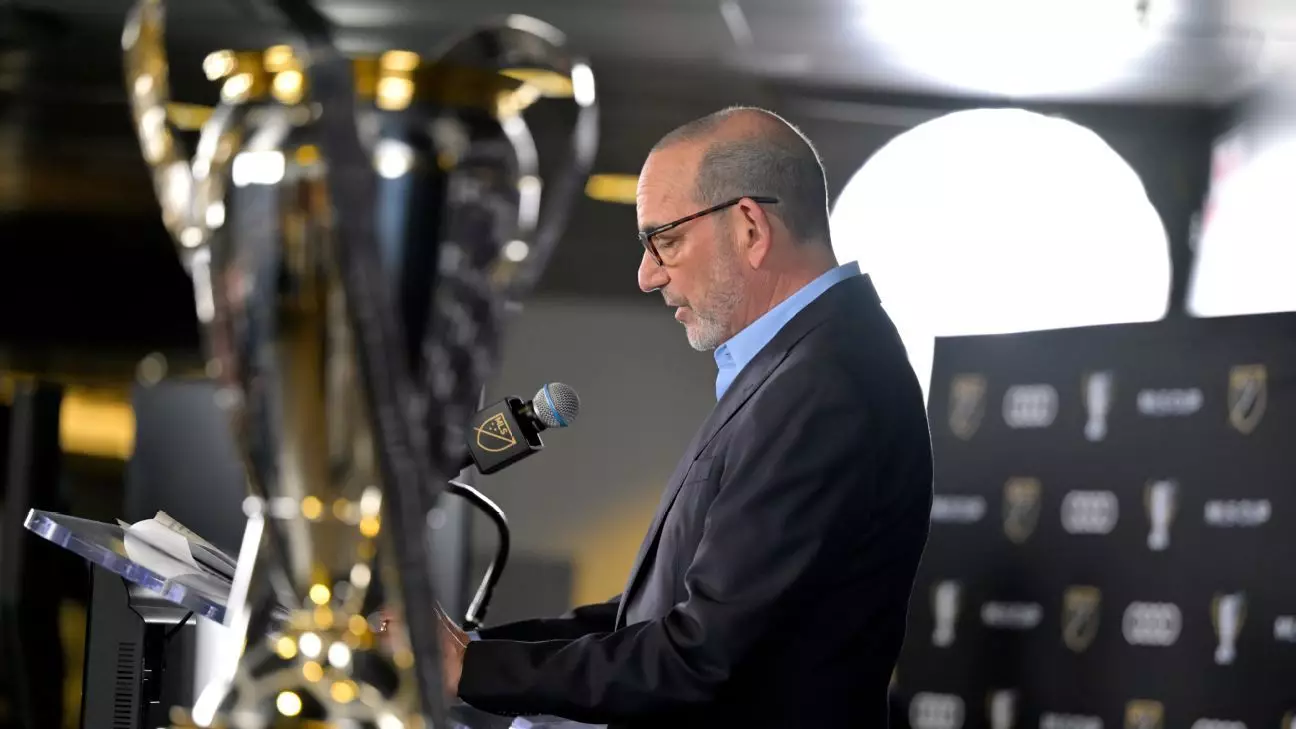As Major League Soccer (MLS) continues to grow in popularity and attendance, the league is confronting a myriad of challenges that come with rapid expansion and increased competition. League Commissioner Don Garber’s recent address shed light on the complexities of an ever-crowding schedule amid potential restructuring of the league calendar. The conversation surrounding such changes underscores the importance of strategic planning to ensure sustainability and success as MLS navigates through a dynamic landscape that includes international tournaments, league cups, and an evolving fan base.
One of the primary issues raised by Garber is the congested calendar, which is becoming increasingly difficult to manage. The possibility of aligning the league’s calendar to mirror European schedules—shifting from the traditional February to December timeframe to a fall/spring system—has resurfaced. Although similar discussions took place in 2004-05 and 2014-15, it appears that momentum is building for a potential switch. However, Garber was apprehensive, suggesting that while consideration for change is more pronounced, there is a significant amount of work to be completed before any decisions are finalized.
The multitude of tournaments MLS clubs are engaged in is creating additional strain on an already packed schedule. Garber highlighted significant events such as the Leagues Cup, U.S. Open Cup, and the Club World Cup. The situation becomes even more complicated when considering the upcoming 2026 World Cup, during which a pause in regular season play is planned. The reality is stark: not every team will have the opportunity to participate in all major tournaments. For the 2024 U.S. Open Cup, only eight teams competed, illustrating significant limitations in tournament participation due to scheduling conflicts.
Garber expressed optimism about expanding participation in future tournaments, with aims to involve more teams and enhance the competitive spirit across the league. He illustrated that ensuring all clubs can partake in at least one tournament should be a priority, as this could foster fan engagement and encourage clubs to vie for trophies. This is seen as beneficial for the clubs and supporters, but Garber candidly acknowledged that the current structure presents insurmountable challenges that cannot be overlooked.
Another focal point discussed in Garber’s address was the Leagues Cup and its need for reform. The objective of fostering a stronger rivalry between MLS and Liga MX through enhanced matchups is clear, as both leagues recognize the power of their partnership. The suggestion of limiting participation in the tournament to fewer teams next season is a strategic move aimed at intensifying competition and giving fans more exclusive matchups. This pivot reflects a greater understanding of how rivalries can energize the league and attract larger audiences, turning matches into highly anticipated events rather than routine fixtures.
The Messi Effect on MLS
The presence of soccer superstar Lionel Messi in the league has undeniably had a transformative impact. Commissioner Garber marveled at the attention and attendance Messi has attracted, quantifying it as beyond anyone’s expectations. Although his team, Inter Miami, faced disappointment in the playoffs, Messi’s effect on away game crowds and overall league interest cannot be overstated. The emotional connection he shares with fans, especially during community events, highlights soccer’s deep ties to culture and community engagement—an aspect that Garber emphasized as critical moving forward.
Broadcasting and Fan Engagement in the Digital Age
The innovative broadcast partnership with Apple TV has ushered in a new era for MLS. Garber’s comments on the viewership metrics indicate a cautious optimism, as the league navigates the complexities of modern broadcasting. The switch to a model where multiple games are aired simultaneously presents challenges in measuring success traditionally. However, the league’s approach of quantifying collective viewership is a thoughtful strategy that embraces the digital landscape while acknowledging the evolving nature of sports consumption.
Moreover, the league’s focus on destination viewership and customer relationships is a forward-thinking strategy aimed at engaging an ever-diversifying audience base. The commitment to enhancing the viewer experience is essential for retaining and attracting fans in a competitive media landscape.
Looking Ahead: Sustainability and Growth
Garber emphasized that while there may not be immediate changes to roster spending, there are ongoing discussions about improving the overall competitiveness of MLS teams. The league is consistently examining ways to optimize resources and encourage strategic growth without placing undue pressure on financial structures. The engagement with player associations during collective bargaining discussions further highlights this intent to find a balanced approach to growth that considers both team competitiveness and financial viability.
MLS stands at a crossroads, faced with numerous challenges and opportunities. As it navigates the complexities of scheduling, tournament participation, and fan engagement, strategic planning will be essential. By acknowledging current obstacles and embracing innovative solutions, MLS can build a sustainable future while providing fans with the thrilling soccer experience they have come to love.

